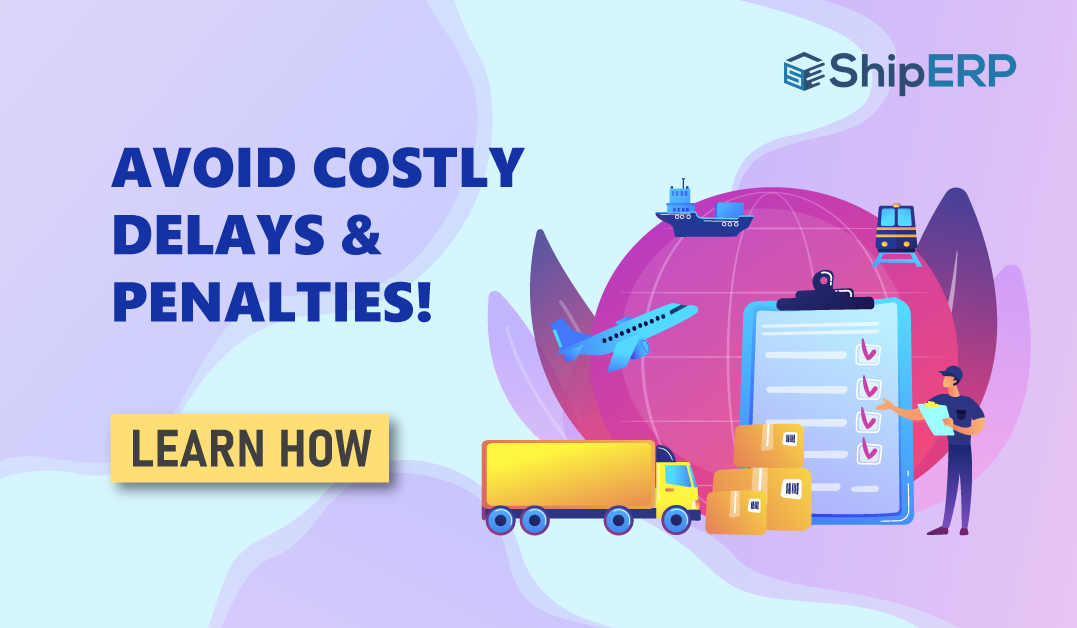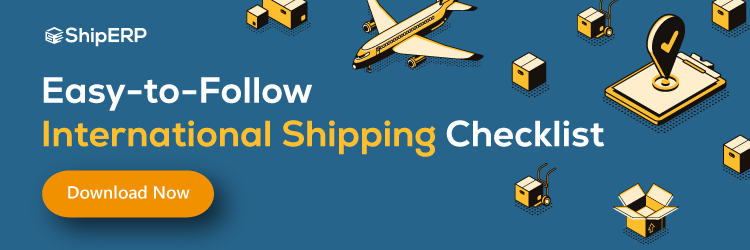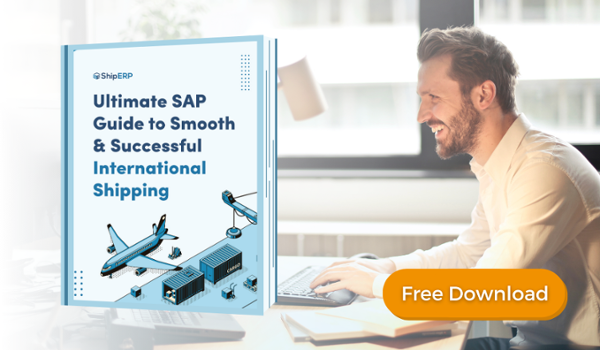
The Customs Clearance Process: A Comprehensive Guide
What’s the best method for a smooth customs clearance process? Aside from filling out export documents correctly and consistently, there are lots to do to deliver your international shipments on time without penalties.
If you’re exporting shipments, all you must do is prepare the right documents! As long as you have the right information, the shipment process won’t be delayed, and you won’t encounter additional costs or even penalties. Ideally, your customers receive your packages in a reasonable time.
If you’re an importer and you’re receiving goods from abroad, essentially, you’ll be organizing the shipping process. On this end of the shipping process, you’ll need to ensure you receive the correct information and documents from the sender.
Let’s say your cargo has arrived thousands of miles just in time but due to missing documents, your cargo is delayed at customs for days. We can’t say this is just a fluke! The best way to avoid this situation is to prepare a checklist.
- List the required documents
- Determine the required information for each document
- Prepare a detailed declarations document
- Check the shipment’s information for accuracy
- Label the cargo with the necessary information
- Deliver the documents to the carrier and/or customs broker
After completing all these steps, you can kick back and relax as the carriers deliver your shipments on time. This is all contingent on understanding the process. It’s easier said than done! Here's your step-by-step guideline for a smooth customs clearance.
The Customs Clearance Process
First Step: Prepare Well!
If you’re going to make an international shipment, you need to be familiar with the customs process for the specific product in the specific country you’re shipping to, regardless of if it’s an export or a free sample shipment. The first step is to gather information. There are many possibilities. For example, a specific product is restricted at the destination country or may need some additional documentation.
Although the level of stringent policies in the customs process varies from country to country. For example, one country can allow customs clearance with just a pro forma, while another may not accept the freight without the original stamped commercial invoice. We’ll show you a comprehensive guide to ensure that you don’t run into any difficulty, even in the strictest customs clearance process.
Write a Detailed Declaration
Basically, shipping companies request a declaration from the shipper. Often, this is a ready-made form with blank fields asking for the requested information. However, in many circumstances, we see that the shipper only documents basic information such as name, number, and weight of the product. Keep in mind that the same product has different names in other countries.
If the customs officer has any doubt about the contents of your shipment, a specialized customs office may extend the clearance process and charge additional fees for the extra screening. In the worst-case scenario, unidentified shipments can’t be returned to you.
You can see why it’s crucial to input all the correct information in the declarations form! Ensure that all other documents like your invoice, bill of lading, and certificate of origin have consistent information from the declaration form. It is important to have everything in order because inconsistent details will lead to problems at the customs stage!
The Declaration Form should include the following details:
- Shipper’s details: name, address, tax number or VAT number or EORI-number, etc.
- Authorized person in the sending company: name, phone, e-mail address
- Buyer company details: name, address, tax number or VAT number or EORI-number, etc.
- Authorized person in the recipient company: name, phone, e-mail address
- The real name and English name of the product
- A correct declaration of the origin of your goods, such as “MADE IN ________”
- Quantity of the product
- Net weight of the product and gross weight in packaged
- Shipment purpose of the product: commercial, sample, etc.
- Detail of the product including material
- Product HS code
- Package details: number of packages, dimensions, package type, etc.
What are the Required Documents for Import-Export Customs Clearance?
Visualize this: you have an overseas shipment and you’ve prepared a declaration form already with all the needed shipping information. Now, all you need is to determine the required export documents and fill them out based on the declarations form!
Basic Documents:
- Commercial Invoice
- Packing List
- Bill of Lading (or Airwaybill or CMR)
If there aren’t any extra documents required, you can export goods with just these three documents. Some companies prepare their invoices to contain packing list information with package and weight details. We highly suggest that you always prepare a packing list. You don’t want to leave it to chance and at the discretion of officials at the customs stage.
Commercial Invoice:
- Shipper’s details (company name, contact information)
- Buyer company’s details (company name, contact information)
- Date
- Invoice Number
- Product name(s) and description
- Quantity of product and unit price
- Invoice total price
- Payment method
- Delivery method
- Bank account information
If a document of origin isn’t required with the shipment, then the invoice must include the country of origin for the products. Although it isn’t mandatory, it doesn’t hurt to include the HS Code of the product on your invoice to make the customs process faster.
Packing List:
- Shipper’s details (company name, contact information)
- Buyer company’s details (company name, contact information)
- Date
- Invoice Number
- Product name(s) and description
- Product net weight
- Packaged gross weight
- Package dimensions
Bill of Lading:
If your cargo is shipped by air, this document will be called the “Airway bill” and “CMR” if it’s shipped by road. The content required in this document is the same as the documents above except for the price details and bank account information.
For international shipping, the bill of lading is the most important. Why? Because it can’t be modified after sending the original document with the shipment! You can revise the invoice or packing list after the goods are shipped and those two documents don’t need to be original in many countries. The bill of lading, however, must be original and modifying this document can be a costly and tedious process.
List of Additional Documents:
- Insurance certificate
- Certificate of Origin
- Movement Certificates (ex. EUR. 1, ATR, etc.)
- Test & Analyze Certificate
- Inspection Certificate
- Electronic Export Information (EEI)
Insurance certificate:
Exporters and importers can ship abroad without preparing an insurance policy, but it’s recommended to issue one if you want the products to be fully secured. It’s up to the exporter and importer to agree which party will insure the shipment according to the delivery type. For example, the exporter isn’t liable to pay insurance for shipments labeled with the Incoterms FOB, EXW, and CFR. The exporter should secure insurance for shipments labeled with the Incoterms CIF, CIP, and DDP.
- CIF – Cost Insurance and Freight (named port of destination)
- CFR – Cost and Freight (named port of destination)
- CIP – Carriage and Insurance Paid to (place of destination)
- DDP – Delivered Duty Paid (place of destination)
- EXW – Ex Works (place of delivery)
- FOB – Free on Board (named port of loading)
Certificate of Origin:
In some countries, it’s enough to write “Made in (country)” on the invoice. But some countries require a certificate of origin to prove the origin of the good. You can obtain this document from your local chamber of commerce and/or the chamber of industry.
Movement Certificate:
Countries with pacts like bilateral trade agreements, free trade agreements, and customs unions provide tax-exempt trade. You can arrange your shipments to include these documents providing tax exemption. For example, obtaining an ATR certificate ensures that your products are exempt from customs duty at customs in European Union countries if you’re exporting to an EU member country.
Test & Analyze Certificate:
Depending on the product type, specific documents and certificates may be required in different countries’ customs. For example, health certificates, test, certificates, analysis reports, and much more.
Inspection Certificate:
Specific products may require an inspection certificate in the customs clearance process. Some countries may request a standard audit report from an inspection firm, depending on the product type. An inspection certificate must be requested to prepare the product for shipping during the manufacturing phase or before shipment.
Electronic Export Information (EEI):
To monitor reliable trade statistics, countries like the U.S. require the electronic filing of export declaration to process products into the customs system before the shipment physically reaches customs.
For example, any products valued at more than $2,500 must file an EEI to the U.S. Census Bureau’s web-based system called AESDirect. Companies can efficiently automate this process with a shipping solution that can integrate with their enterprise planning software, like ShipAES.
Tips to Avoid Common Mistakes – Sample Products & Loading Types
Sample Products
A lot of customs clearance problems is related to sample products. Usually, companies that send samples don’t investigate customs procedures thoroughly for the country of destination. Often, the shipping documents of the sample products are prepared with incomplete and/or incorrect information.
Although customs officers may be flexible on some issues on free products, there is a limit to their tolerance for deficiencies and incorrect information in the accompanying documents. Another issue related to sample products is incurring customs tax. Product taxes, especially antidumping and surveillance taxes, may sometimes exceed the sample’s real value.
Most Common Mistakes About “Sample Products”
1. Failing to disclose the actual value of sample products:
Some companies might think that sample bills could be prepared without a price. However, the product price must be shown on the invoice. Add phrases such as “free of charge” or “sample product without value” or “customs purpose only” on your invoice As a result, your product will be considered free of charge, but the customs tax will be calculated on its actual value. The importer will be able to receive the product after paying customs tax and VAT. Products that arrive with an invoice without a price will be rejected by customs authorities.
2. Failing to disclose the actual word "sample”:
A common mistake in sample shipments is not stating in the invoice that the product shipped is a sample. You must clearly define the definition of goods as a sample. A phrase like “samples with no commercial value” will be sufficient. If you don’t include a similar statement, customs officials may evaluate the incoming product as a commercial product. While some products are free to enter the country as samples, they may be prohibited or restricted in commercial status.
3. Failing to consider the quantity and material value of free products:
For a shipment to be included in the free product category, you must consider the number and unit value of the products in the shipment. For example, a shipment containing 100 buttons worth 10 cents each is accepted as a sample, but a single motorcycle worth $1,000 is not accepted as a sample. As a product, a motorcycle is a heavy, complicated, and expensive product that doesn’t enter the status of sample.
Let’s consider another case. A shipment of 80 t-shirts with a unit value of $1 may not be accepted as a sample by customs. Even though the commercial value is low, the number of total units is high.
4. Frequently sending free samples to the same company:
Frequent sample shipment between the same companies can be flagged by customs and sorted into commercial status. In those cases, it’s possible for the importer company to be fined for false statements.
Parcel Shipments & LCL
Partial shipment or LCL (less container load) is a term used for shipment that don’t cover a complete container or truck. Parcel products include goods that are generally lighter than 150 lbs. or 68 kgs.
Most Common Mistakes in Parcel Shipments
1. Unlabeled boxes or insufficient labeling:
If you’re shipping parcel, you should be careful about labeling the boxes or pallets in the documents. If you’re not detailed, there’s a risk that your shipments will be delivered incorrectly. As a rule, add the following details to your labels:
- Shipper’s name
- Name of the shipment and the receiving companies
- Name and phone number of the contact
- Shipment tracking number
- Number of the products
- Shipment number
The shipment number must match the number on the packing list. Even if a properly labeled product is loaded on the wrong container or unloaded to the customs area to be delivered to a different customer, your shipper can quickly identify and fix the problem depending on the label details. Many shippers stick labels for each side of the shipment.
2. Incorrect Packaging:
Incorrect packaging encompasses a variety of mistakes like if the packaging doesn’t match the product dimensions or a packaging that can cause damage to the product. For example, incompatible packaging may cause the shipments to stack well with each other. In parcel loading, the risk of damaging the packaged products is high due to the loading/unloading process being carried out on different transportation vehicles more than once.
In contrast, full container loads are only loaded once on the carrier and unloaded once at the destination. In this respect, the risk of damage is less in full containers and full trucks compared to partial shipments. Regardless of loading type, if your shipments are properly packed with all the necessary export documents, customs on both ends of the shipping flow will be processed quickly and error-free.
The Benefits of a Quick Customs Clearance Period
Is it up to your company to speed up the customs clearance process? Yes!
In fact, everything is in the hands of the exporter and importer if both parties offered correct and consistent information with each other. If the export documents delivered to customs are complete and accurate, there’s nothing to be afraid of!
Consequences of Delay in Customs Clearance
- Products held back in customs are stored in ports or warehouses which accrue storage fee per day. This results in an increase of the unit cost of the product.
- It’s especially problematic for customs orders to consistently take longer than expected. Business functions are affected negatively, like delayed production in factories.
- Food and health products may deteriorate with prolonged customs processes, especially if they’re not packaged properly for an extended period. If transportation modes accommodate the products with refrigerated containers such as reefers, the daily waiting costs of these types of containers are very high.
- Long customs periods pose a great risk for seasonal shipments. For example, you might miss the seasonal holiday to sell a specific product in the winter due to documentation mistakes. The goods will extend its customs process and returned to you because it passed the holiday. It’s a great loss for your company if this consistently happens.
Being prepared is the key to a smooth customs clearance! Make sure you know which documents are required, and this all depends on the type of product you’re sending internationally. Be mindful that each country has its own rules and requirements. Even down to the small details, your package labels must be accurate as well to pass through the customs process smoothly and quickly!
If you have everything ready and correctly, you won’t experience any delays or accrued charges! Happy exporting!



